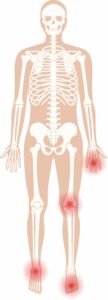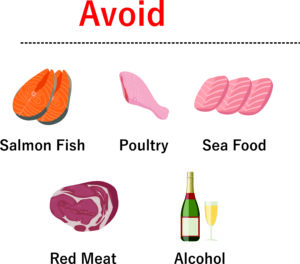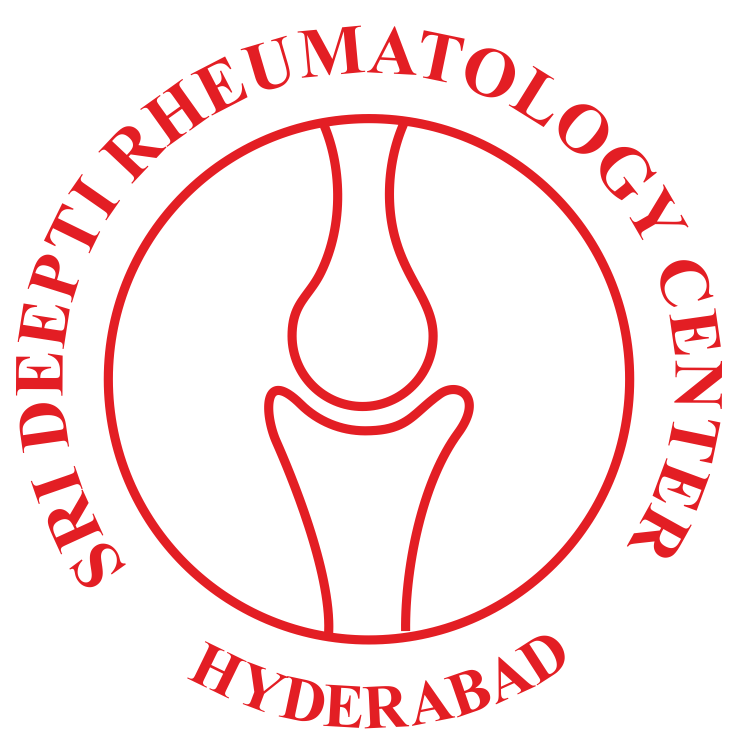Gout
 Gout is a crystal induced arthropathy caused by deposition of uric acid crystals in the joints leading to acute joint pains with swellings. Gout has been known to mankind since ancient days and has been described in various texts. Known as the “Rich man’s Disease” it was prevalent amongst men from upper sections of the society forming its basis as a rich man’s disease though it can be seen in all sections of the society and an atypical form of gout can also be seen in older women. Gout typically manifests as a “Red hot joint”.
Gout is a crystal induced arthropathy caused by deposition of uric acid crystals in the joints leading to acute joint pains with swellings. Gout has been known to mankind since ancient days and has been described in various texts. Known as the “Rich man’s Disease” it was prevalent amongst men from upper sections of the society forming its basis as a rich man’s disease though it can be seen in all sections of the society and an atypical form of gout can also be seen in older women. Gout typically manifests as a “Red hot joint”.
Uric acid is a by- product of protein metabolism. When the protein is digested by the body, uric acid is produced and then excreted by the kidneys in the urine. In Gout, there is increased Uric acid level in the body either through increased production or by decreased removal where the uric acid is not effectively removed.
The prevalence of Gout is around 0.12% though increased incidence is being noted. Men are affected more than women though menopause in women can increase the risk of Gout. Premenopausal women and children rarely suffer with Gout unless there is a background of inborn metabolism errors. Older age is a risk factor as age related decline in kidney function occurs. Gout in some patients can be inherited through genetic factors and in those patients, there is usually a family history. Dehydration, stress and alcohol excess can aggravate Gout.
The most affected joint is the big toe. Sudden onset of pain associated with joint swelling will be present. The pain is severe and can be disabling. The pain and swelling continue for a few days which then resolve until the next attack and there is usually a pain free period between attacks. This pattern is called Episodic attacks. As the condition progresses other joints can be involved with more severe and frequent attacks. In longstanding untreated patients, everyday pain in all the joints can be present which is called Chronic Gout. In patients with uncontrolled Gout, small crystals containing uric acid called “Tophi “will be formed which can cause deformities on the joint lines.
 Gout is diagnosed based on the patient history and clinical presentation. Uric acid levels when checked during an acute attack of Gout can be within normal. Once Gout is diagnosed, treatment should be started and continued to prevent the disease progression. The treatment should continue even if there is another attack as the treatment will reduce the severity long term. The treatment for Gout is using Urate lowering therapy in the form of various medications and lifestyle changes. Acute attacks of Gout are managed with anti-inflammatory medication.
Gout is diagnosed based on the patient history and clinical presentation. Uric acid levels when checked during an acute attack of Gout can be within normal. Once Gout is diagnosed, treatment should be started and continued to prevent the disease progression. The treatment should continue even if there is another attack as the treatment will reduce the severity long term. The treatment for Gout is using Urate lowering therapy in the form of various medications and lifestyle changes. Acute attacks of Gout are managed with anti-inflammatory medication.
 Alcohol is a known trigger for Gout and complete alcohol cessation is advised. Cutting down purine rich foods such as red meat, organ meat and sea food is advised. Vitamin C is known to improve symptoms and diet rich in citrus foods is advised. In patient who are overweight and obese, weight reduction can improve the symptoms.
Alcohol is a known trigger for Gout and complete alcohol cessation is advised. Cutting down purine rich foods such as red meat, organ meat and sea food is advised. Vitamin C is known to improve symptoms and diet rich in citrus foods is advised. In patient who are overweight and obese, weight reduction can improve the symptoms.
